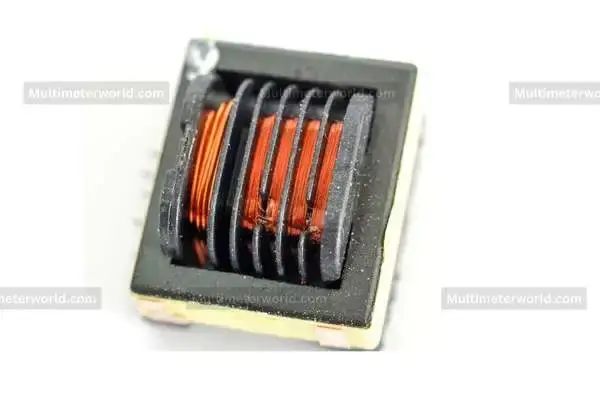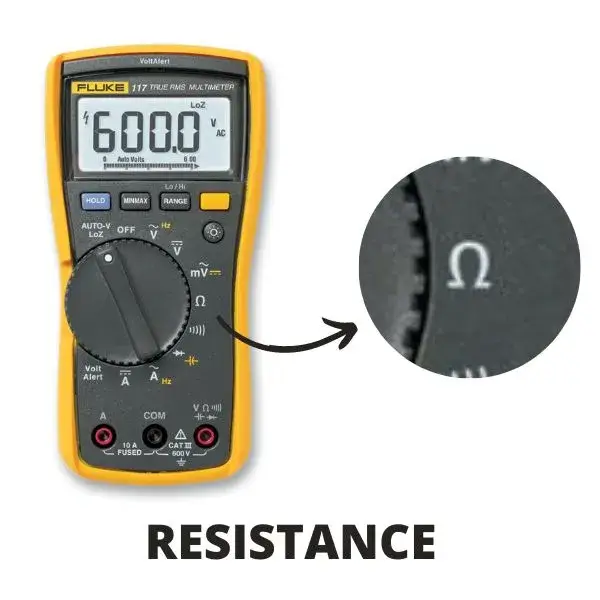Want to know how to test a microwave transformer with a multimeter? Microwave transformers are fairly easy to test with a multimeter, offering insights into the state of your oven.
If you don’t know how to use a multimeter for testing microwave transformers. I’ve written another blog on it!
I will also explain some important safety considerations that should be taken before starting. With clear instructions and helpful tips, it will provide all the knowledge necessary to get started in no time!
If it’s not heating up correctly or suddenly quits working, you’ll want to know how to gauge the condition of your transformer accurately! But firstly we should know about the most important part of a microwave “Transformer”
Read More about 7 Best Multimeter for Appliance Repair
What Is A Transformer?
A transformer is an electrical device that can change the voltage from one level to another without changing the frequency. It has two parts – a primary and secondary coil wound around an iron core. When electricity is put into the transformer, the primary coil creates a constantly alternating current of magnetic flux, which then crosses over to the secondary coil, where it induces an output voltage.
Function of a Microwave Transformer
The primary function of a microwave transformer is to step up the standard household voltage (typically 110-120V in North America or 220-240V in Europe) to a much higher voltage, usually around 2,000 to 4,000 volts. This high voltage is required to power the magnetron, the component that produces microwave radiation used to heat and cook food.
Process of Voltage Transformation
- Primary Winding: The transformer has a primary winding that connects to the household electrical supply.
- Secondary Winding: It also has a secondary winding, where the voltage is stepped up.
- Magnetron Powering: The high voltage from the secondary winding is then used to power the magnetron, which generates microwaves at a frequency of about 2.45 GHz.
- Cooking Process: These microwaves penetrate the food, causing water molecules to vibrate and produce heat, effectively cooking the food from the inside out.
Types of Microwave Transformers
Microwave transformers come in various types, each designed for specific applications and efficiency requirements. The two primary types are:
- High Voltage Transformer (HVT): This is the most common type used in microwave ovens. It steps up the voltage from the household supply to the high voltage needed for the magnetron.
- Inverter Transformer: Found in modern microwave ovens, inverter transformers offer more precise control over the cooking process. They can adjust the power output continuously rather than switching on and off, providing more consistent heating and better energy efficiency.
Construction of a Microwave Transformer
The construction of a microwave transformer involves several key components:
- Core: Typically made of laminated steel sheets to reduce energy losses due to eddy currents. The core provides a path for the magnetic flux.
- Primary Coil: Wound with thick copper wire to handle the input voltage from the household supply.
- Secondary Coil: Wound with thinner wire but with many more turns than the primary coil, this is where the high voltage is generated.
- Filament Winding: A smaller winding that provides the necessary voltage to heat the cathode of the magnetron.
- Insulation: To prevent short circuits and ensure safety, various insulating materials are used to separate the windings and the core.
Read more about How to Test 24V Transformer With Multimeter?

Application of Transformer in Microwave
A microwave oven is a kitchen appliance that uses electromagnetic radiation to cook or heat food quickly. It has an electronic device called a magnetron that generates microwaves, which are high-frequency radio waves.
These microwaves penetrate the food and cause the water molecules in it to vibrate rapidly, generating heat and cooking the food.
The Role of Transformer in Microwave Ovens

The transformer is an essential component of a microwave oven. It is responsible for converting the high voltage from the power source into a lower voltage that can be used by the magnetron.
The transformer consists of two coils of wire wrapped around an iron core that is responsible for inducing an electromagnetic field in one coil when current flows through the other coil.
Read more about How to Test a Magneto Coil with a Multimeter?
Functioning of Transformer in Microwave Oven
When you turn on your microwave oven, electricity flows from the power source into the transformer, where it is stepped down to a lower voltage suitable for use by the magnetron. This low-voltage electricity then passes through a waveguide and enters the cooking chamber, where it powers the magnetron.
- The magnetron generates microwaves, which bounce off the reflective walls of the cooking chamber and penetrate your food.
- As mentioned earlier, these microwaves cause water molecules in your food to vibrate rapidly and generate heat that cooks your food quickly and efficiently.
- Overall, transformers play a critical role in making microwave ovens work effectively by converting high voltage to low voltage suitable for powering magnetrons that generate microwaves used in cooking or heating food.
Read more about How to Test a Doorbell Transformer without a Multimeter?
How To Test A Microwave Transformer With A Multimeter
Testing the transformer of your microwave is an important step before attempting any repairs. This guide will provide a step-by-step guide on how to test a microwave transformer with a multimeter.
Before you start testing the transformer, it’s important to ensure that you are wearing protective gloves and eyewear and that the power is off before working on the appliance. Once you have taken these safety precautions, you can begin testing. Here are some steps to follow:
Step 1: Terminal Identification

Find the transformer terminals. To find these terminals, use a flashlight and look around the edges of the cabinet where the transformer is located. You should spot two metal tabs (or terminals) near the bottom of the cabinet that correspond to your multimeter’s probes.
Step 2: Multimeter Setting
Set your multimeter for resistance (ohms). Before inserting either probe into any terminal or tab on your transformer, ensure your multimeter is set for resistance (ohms). If you do this beforehand, it will be able to measure resistance from your transformer accurately.

Step 3: Results Analysis
Insert probes into terminals and record results. Once you have set up your multimeter correctly, insert one probe into each terminal or tab of your transformer and record whatever values appear on its display screen for both primary and secondary readings. Any reading below 1 ohm indicates normal operation; anything above 1 ohm indicates a faulty component or circuit board issue needing further diagnosis and repair.
Step 4: Continuity Testing

Check the continuity between wires & components. The last step in checking continuity involves connecting one probe from your multimeter to each wire or component inside your microwave while also ensuring they are still connected to their respective terminals or tabs outside of it.
If all connections show continuity, everything is functioning normally; if not, then something isn’t right and needs further investigation before attempting any repairs or replacements!
Safety Considerations
Microwave transformers operate at dangerously high voltages and pose significant safety risks. Here are some key safety considerations:
- High Voltage: The output voltage can be lethal. Proper insulation and handling procedures are critical.
- Current: Even though the secondary winding produces high voltage, the current is relatively low. However, it is still enough to cause serious injury or death.
- Capacitors: Microwave ovens contain high-voltage capacitors that can retain a charge even after the appliance is unplugged. Discharging these capacitors safely before working on the oven is crucial.
- Shielding: The transformer and other high-voltage components are usually enclosed in a metal casing to prevent accidental contact.
How Do You Know If A Transformer Is Bad?

Identifying whether or not a transformer is bad can be tricky. It may be difficult to tell by looking, as some transformers appear undamaged even when faulty. However, certain signs and symptoms can indicate a bad transformer, such as:
- An audible hum or buzz from the transformer (this indicates an issue with the electrical components).
- The unit feels unusually hot to the touch (this could mean it is overloaded or burning out due to an internal malfunction).
- The LED indicator light on the transformer stays on all the time instead of flashing when in use like it should (This typically means there is something wrong with its power supply, and it will need to be checked out).
- The output voltage drops significantly below what it should be set at (a lower than normal voltage could mean that your transformer has gone bad and needs replacing).
Suppose you find any of these symptoms present in your transformer. In that case, you may want to get it evaluated by a professional electrician right away to avoid any further damage caused by shorting out power lines or overheating due to excessive strain on other parts of your machinery or home appliances caused by an insufficient power supply from a faulty device such as a damaged or burnt-out transformer. If you want to learn the Fluke vs Klein then you can read my blog.
Wrapping Up!
Now you know how to test a microwave transformer with a multimeter. Testing a microwave transformer with a multimeter is not a task to be taken lightly. All safety precautions must be followed in order to prevent injury or damage to the equipment. It is important to have an understanding of electricity fundamentals and basic physics laws in order to complete this task approach effectively and accurately.
If you feel uncomfortable conducting this test on your own, it’s probably best to take your device to a professional technician for a proper diagnosis. After completing the test process, you can compare the readings that you collected with the standards indicated by the manufacturer to determine if the part needs replacing or adjustment.
Ultimately, knowing how to troubleshoot simple electronic problems can save you money, allowing you to enjoy microwaved meals whenever and wherever.

